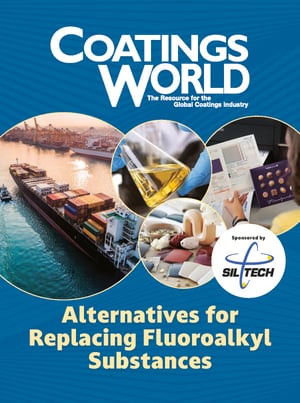Alternatives for Replacing Fluoroalkyl Substances
Finding a Suitable Replacement for PFAS in Coatings
Per- and polyfluoroalkyl substances (PFAS) are a large, complex group ofsynthetic chemicals that have been used in consumer products globally since approximately the 1950s. These chemicals are formulated in a variety of consumer and industrial products.
Forever Chemicals
PFAS molecules have a chain of linked carbon and fluorine atoms. Because the carbon-fluorine bond is one of the strongest, these chemicals do not degrade easily in the environment. For that reason, they are often referred to as “forever chemicals.”
There are a number of health issues related to exposure to PFAS, including infertility, increased risk of certain cancers and liver damage. For this reason, there is an increasing movement to implement stringent regulations restricting PFAS. Currently, in the U.S. more than a half dozen states are enforcing some sort of restrictions, including the start of a total ban on PFAS in all products in Maine.
The newly effective measures range from labeling requirements to bans of the substance in products, including food packaging, firefighting foam and personal care products.
The Search for a Replacement
This has been the impetus for finding a suitable replacement for PFAS. Finding a replacement will not be an easy task as PFASs offer unique properties and performances. This e-book, “Alternatives for Replacing Fluoroalky Substances,” explores the use of silicon materials as a replacement for
Perfluoroalkyl Substances.
According to research from Siltech, for many of these applications, organofunctional silicones are a viable option for replacing a PFAS.

